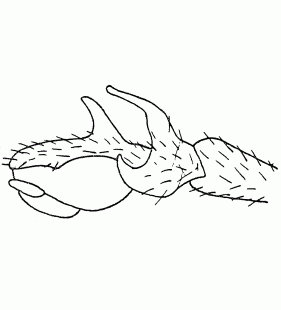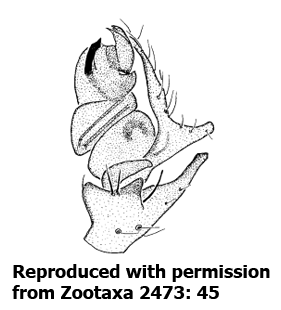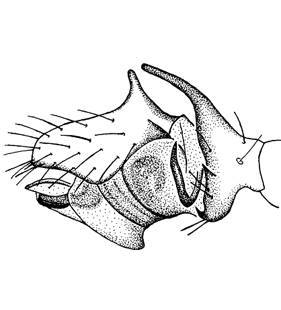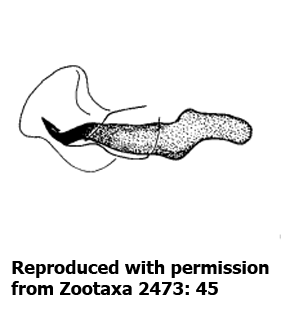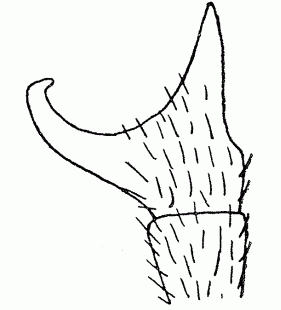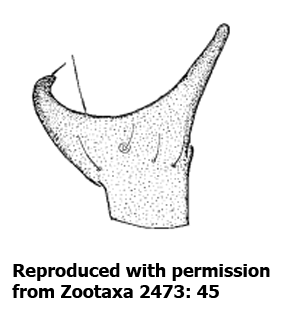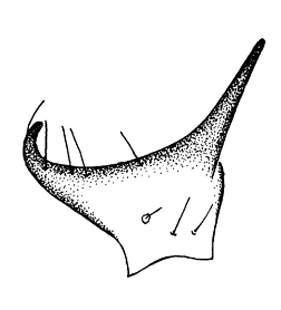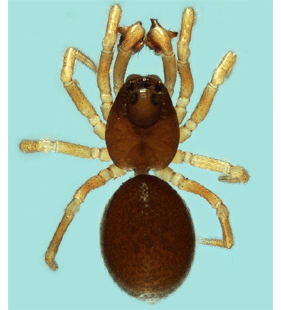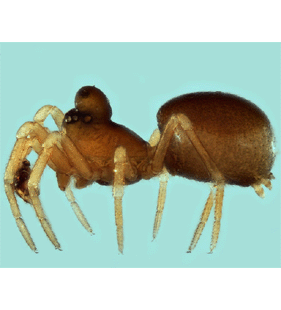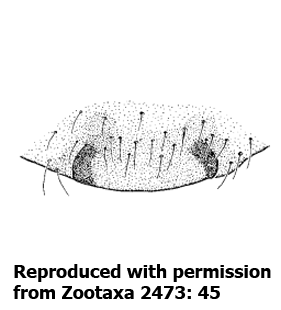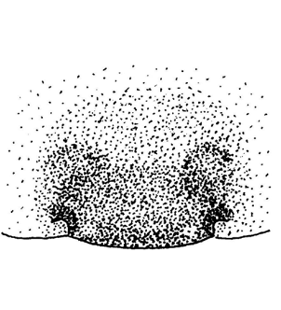Parapelecopsis susannae (Simon, 1915)
Beschreibung
Männchen
Prosoma gelblich-braun, Fovea verdunkelt. Prosomalänge: 0.60-0.65 mm, Prosomabreite: 0.44-0.49 mm. Beine gelblich-orange. Opisthosoma dunkelgrau bis schwarz, mit Scutum.
Körperlänge Männchen: 1.2-1.4 mmWeibchen
Färbung wie Männchen. Prosomalänge: 0.60-0.66, Prosomabreite: 0.49-0.52 mm. Opisthosoma ohne Scutum.
Körperlänge Weibchen: 1.4-1.9 mmZusätzliche Informationen
In unterschiedlichen Habitaten gefunden, mehrheitlich aber in offenen Habitaten.
Merkmalsliste Linyphiidenschlüssel
Verbreitung
Phänologie
| Jan | Feb | Mar | Apr | May | Jun | Jul | Aug | Sep | Oct | Nov | Dec |
 |  |
Abbildungen
Verbreitungsnachweise
"No reference" bedeutet nicht, dass die Art in diesem Land nicht vorkommt, sondern dass wir die Referenz hierfür noch nicht eingefügt haben. Wir arbeiten daran.
Literatur
Bosmans R, Cardoso P, Crespo L C (2010) A review of the linyphiid spiders of Portugal, with the description of six new species (Araneae: Linyphiidae). Zootaxa 2473: 1-67 ![]()
Branco V V, Morano E, Cardoso P (2019) An update to the Iberian spider checklist (Araneae). Zootaxa 4614: 201-254 ![]()
Lavery A (2019) A revised checklist of the spiders of Great Britain and Ireland. Arachnology 18: 196-212 ![]()
Merrett P, Prince M P (2018) Pelecopsis susannae (Simon, 1915) in Britain (Araneae: Linyphiidae). Arachnology 17: 392-393 ![]()
Simon E (1926) Les arachnides de France. Synopsis générale et catalogue des espèces françaises de l'ordre des Araneae. Tome VI. 2e partie. Roret, Paris, 309-532 ![]()
WSC (2025) World Spider Catalog. Version 26. Natural History Museum Bern, online at http://wsc.nmbe.ch (28.2.2025) doi: 10.24436/2 ![]()
